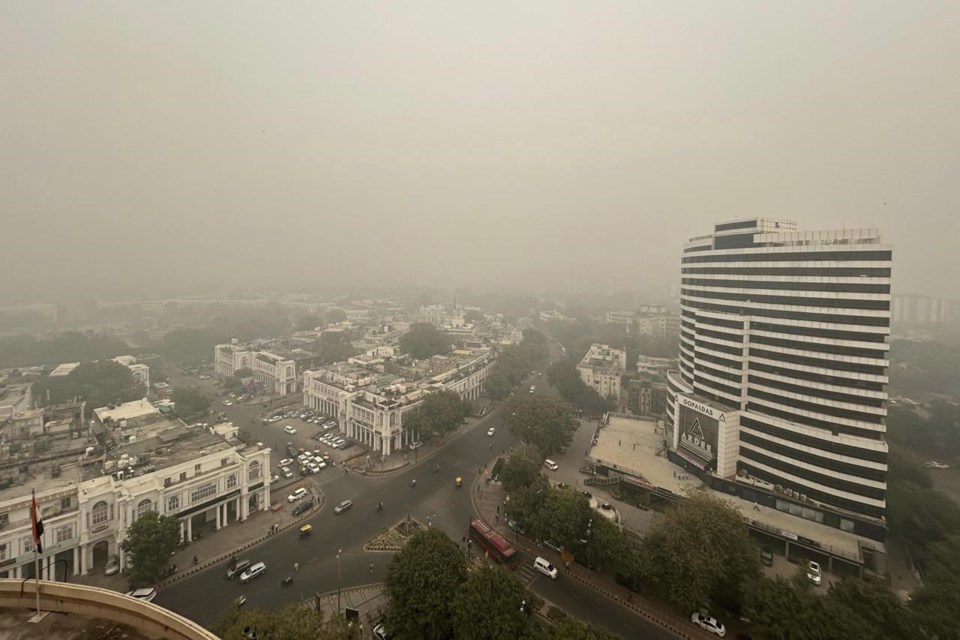NEW DELHI (AP) — New Delhi's government shut primary schools and banned polluting vehicles and construction work in an attempt to reduce the worst haze and smog of the season, which has posed respiratory problems for people and enveloped monuments and high-rise buildings in and around India's capital.
Authorities deployed water sprinklers and anti-smog guns to control the haze and many people used masks to escape the air pollution. The city government announced a fine of 20,000 rupees ($240) for drivers found using gasoline and diesel cars, buses and trucks that create smog, typically models 10 to 15 years old.
The air quality index exceeded the 400 mark for tiny particulate matter, a level considered “severe” and more than 10 times the global safety threshold, according to the state-run Central Pollution Control Board. It can cause acute and chronic bronchitis and asthma attacks.
Rajneesh Kapoor, a lung specialist, advised people to wear masks and avoid morning walks and jogging. ``This is a trigger for all types of respiratory infections and flu. It can cause uncontrollable blood pressure and diabetic problems,” he said in an interview with the New Delhi Television news channel.
Ritesh Kumar, who was visiting New Dehli from elsewhere in India, said this air was extremely harmful to people like him because he had recently recovered from COVID-19. ``I have been suffering from severe headaches since I landed in New Delhi from Maharashtra state" in western India.
``What message does this polluted Delhi send across the world?” he asked.
On Thursday, authorities banned all construction and demolition work in and around the city with the exception of essential activity such as metro rail, airport, defense and water pipeline projects.
New Delhi Environment Minister Gopal Rai warned people about the smog situation worsening with Diwali, the Hindu festival of light that features the lighting of firecrackers, coming up on Nov. 12.
New Delhi tops the list almost every year among the many Indian cities with poor air quality, particularly in the winter, when the burning of crop residues in neighboring states coincides with cooler temperatures that trap deadly smoke.
The burning of crop remnants at the start of the winter wheat-sowing season is a key contributor to the pollution in north India. Authorities have been trying to discourage the farmers by offering cash incentives to buy machines to do the job.
Bhagwat Mann, the top elected official in northern Punjab state, said his government's efforts have cut the amount of crop residue burning by 30%.
According to the state-run Indian Institute of Tropical Meteorology in Pune, smoke from stubble burning accounted for 25% of the pollution in New Delhi.
New Delhi saw a sharp 32% rise in tiny particles in the air between 2019 and 2020, a dip of 43.7 % in 2021, and a steady increase in 2022 and 2023, according to Respirer Living Sciences, an organization that monitors air quality and other environmental factors.
The city's air quality deteriorated from 109 micrograms per cubic meter to 113.9 in the past year, a 4.4% increase, the organization said.
___
Follow AP's coverage of the climate and environment at https://apnews.com/climate-and-environment
Ashok Sharma And Piyush Nagpal, The Associated Press



